Lessertia frutescens (Previously Sutherlandia frutescens)
| Botanical Name | Lessertia frutescens (Previously Sutherlandia frutescens) |
|||||||||||
| Family | Fabaceae - The legume and pod-bearing family. (Pea & Bean Family) |
|||||||||||
| Pronunciation | suth-er-LAN-dee-uh froo-TESS-enz |
|||||||||||
| Common Name(s) |
English: Cancer Bush; Balloon Pea
Afrikaans: Kankerbos; Eendjies; Gansiesblom
IsiXhosa: umnwele
IsiZulu: umnwele
|
|||||||||||
| Plant Group |
|
|||||||||||
| Plant Size |
|
|||||||||||
| Position |
|
|||||||||||
| General Information |
|
|||||||||||
| Specific Information | With its luminous red flowers, grey-green foliage and chubby, pale green seed pods, Lessertia frutescens can be used to fill and brighten any spot in the garden and especially dry spots where little else will grow. For a stronger statement it is best planted in groups of three to five. These are short-lived plants that seldom last more than a season or two but self seed easily. They are pest resistant and often visited by nectar eating birds. |
|||||||||||
| Ad Break | ||||||||||||
| Flowers | ||||||||||||
| Description | pea-like flower to 35mm long |
|||||||||||
| Season |
|
|||||||||||
| Colour |
|
|||||||||||
| Growth Rate |
|
|||||||||||
| Plant Uses |
|
|||||||||||
| Distribution and Habitat | Western Cape, up the west coast through the Northern Cape to Namibia and into Botswana, and from the western Karoo to the Eastern Cape, Free State, KwaZulu-Natal and Mpumalanga, in dry areas |
|||||||||||
| Planting Suggestions | Lessertia frutescens is fast and easy to grow, but short-lived as a garden subject. Plant in full sun. It tolerates all soil types but will respond well to some compost, fertilizer and a little water. Mulch well around the roots. Do not over water if growing in a container. The last two photos above show specimens in my garden, one in good soil, well mulched and given occasional water. The last picture shows a group of three plants, the same age as the previous one. They are in full sun, in nutrient poor soil, have no mulch and are only watered with the rest of this bed when it is critically dry. The cancer bush grows easily from seed planted in autumn or spring in well-drained soil. Soak the seeds for about 4 hours or overnight in water hot enough for you to put your hand in then plant immediately. Keep the seed trays warm (not hot) and damp but not wet. Seeds should germinate in 2 to 3 weeks and seedlings can be transplanted when they are 8 - 10 cm tall. It is a good idea to plant them in groups of 3 or 5, depending on how much space you have, for a fuller, more attractive bush. Plant the seedlings about 30 to 40 cm apart from each other. |
|||||||||||
| Medicinal Uses | A much used and respected medicinal plant in southern Africa. The Khoi San and Nama people used it mainly for the washing of wounds and internally to bring down fevers. The early colonists used it in the treatment of chicken pox, stomach problems and internal cancers. It is also been used in the treatment of eye troubles, to treat colds, 'flu, asthma, TB, bronchitis, rheumatism, rheumatoid arthritis and osteoarthritis, liver problems, hemorrhoids, piles, bladder, uterus & 'women's' complaints, diarrhea & dysentery, stomach ailments, heartburn, peptic ulcers, backache, diabetes, varicose veins and inflammation. It is also used in the treatment of mental and emotional stress, including irritability, anxiety and depression and is used as a gentle tranquilizer. Research on its properties as a cure for cancer and as an immune booster in the treatment of HIV/AIDS is ongoing. |
|||||||||||
| Ad Break | ||||||||||||


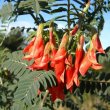
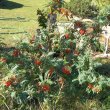
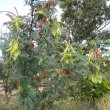
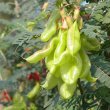
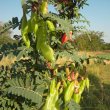

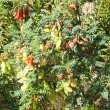
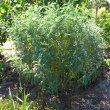



Comments
sutherlandia.
Looking for advice as to how to grow a already excisting plant purchaced from a supplier and is still in plastic wrapping. How deep must I plant and how big surrounding area. Will the plant totally die and when since I just purchace a single plant. How much must I plant.Al sorces indicate it is a short live plant. How short etc
Growing Sutherlandia
Hi Jackie
Plant the shrub so that the soil level in the bag is level with the ground in which it is planted. The hole must be a little bigger than the bag. The plant will only last a year or two, sometimes even three. It should grow about 1 meter tall and about 75 cm across. Make sure you collect the seeds so that you can grow more plants. They are easy to grow from seed. The number you need to plant will depend on what you want to use it for (medicinal or ornamental) and how much space you have got. As an ornamental I like to grow three plants together about a meter apart from each other. It is a good idea to plant some seeds every year so if a plant dies you will have a replacement ready.
Hope this helps.
Kind regards
Lorraine
Discuss this plant
Share knowledge, ask a question or give an experience.